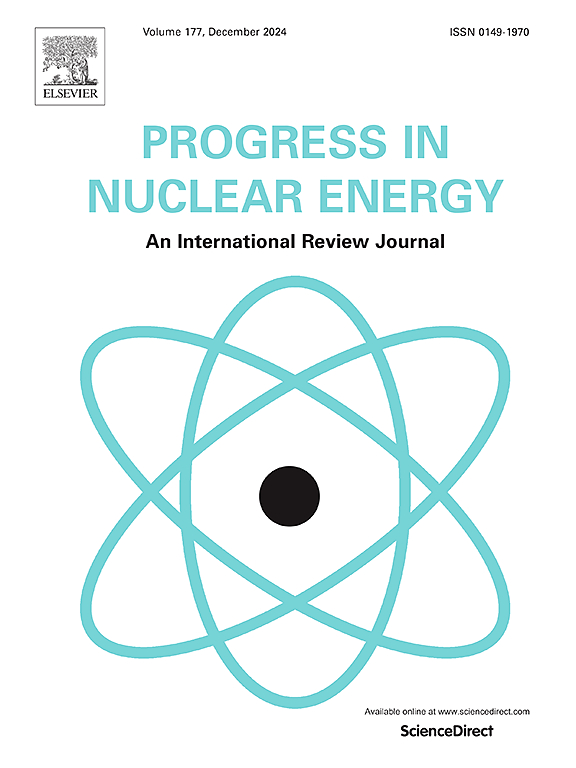A new fuel shuffling model for treating the random burnup histories of pebble-bed reactor
IF 3.3
3区 工程技术
Q1 NUCLEAR SCIENCE & TECHNOLOGY
引用次数: 0
Abstract
The core of the pebble-bed reactor (PBR) consists of numerous moving fuel pebbles. These pebbles randomly flow through the reactor core and are recycled until reaching the designed burnup limit, which causes a random burnup history for each individual fuel pebble. The traditional fuel shuffling model in the VSOP code lacks the capability of capturing the random burnup history effect. This paper presents a new batch shuffling model newly implemented in the PANGU code, allowing for a more physically realistic modeling of the random pebble flow. The random batch shuffling model is applied to the simulation of continuous refueling of HTR-10. The results are compared with the traditional fuel shuffling model. It is found that the random batch shuffling model greatly improves the code's capacity of tracing the complex burnup histories of PBR, enabling direct and detailed simulation of the probability distributions of burnup and the relative dispersion of nuclide densities, which provides meaningful insights for the operation of PBR.
求助全文
约1分钟内获得全文
求助全文
来源期刊

Progress in Nuclear Energy
工程技术-核科学技术
CiteScore
5.30
自引率
14.80%
发文量
331
审稿时长
3.5 months
期刊介绍:
Progress in Nuclear Energy is an international review journal covering all aspects of nuclear science and engineering. In keeping with the maturity of nuclear power, articles on safety, siting and environmental problems are encouraged, as are those associated with economics and fuel management. However, basic physics and engineering will remain an important aspect of the editorial policy. Articles published are either of a review nature or present new material in more depth. They are aimed at researchers and technically-oriented managers working in the nuclear energy field.
Please note the following:
1) PNE seeks high quality research papers which are medium to long in length. Short research papers should be submitted to the journal Annals in Nuclear Energy.
2) PNE reserves the right to reject papers which are based solely on routine application of computer codes used to produce reactor designs or explain existing reactor phenomena. Such papers, although worthy, are best left as laboratory reports whereas Progress in Nuclear Energy seeks papers of originality, which are archival in nature, in the fields of mathematical and experimental nuclear technology, including fission, fusion (blanket physics, radiation damage), safety, materials aspects, economics, etc.
3) Review papers, which may occasionally be invited, are particularly sought by the journal in these fields.
 求助内容:
求助内容: 应助结果提醒方式:
应助结果提醒方式:


